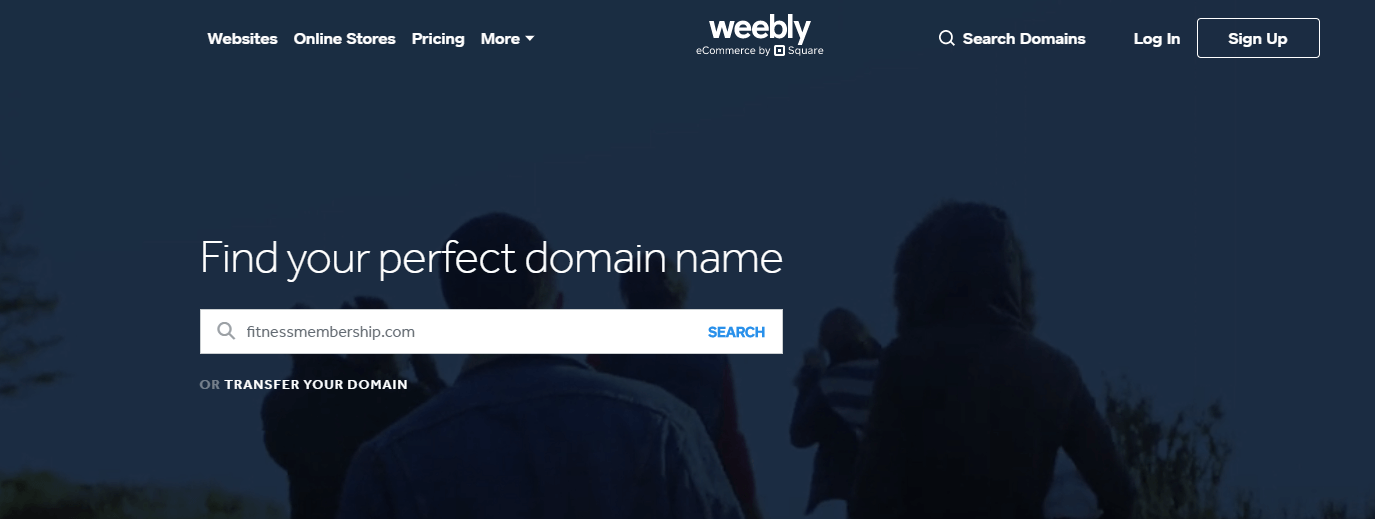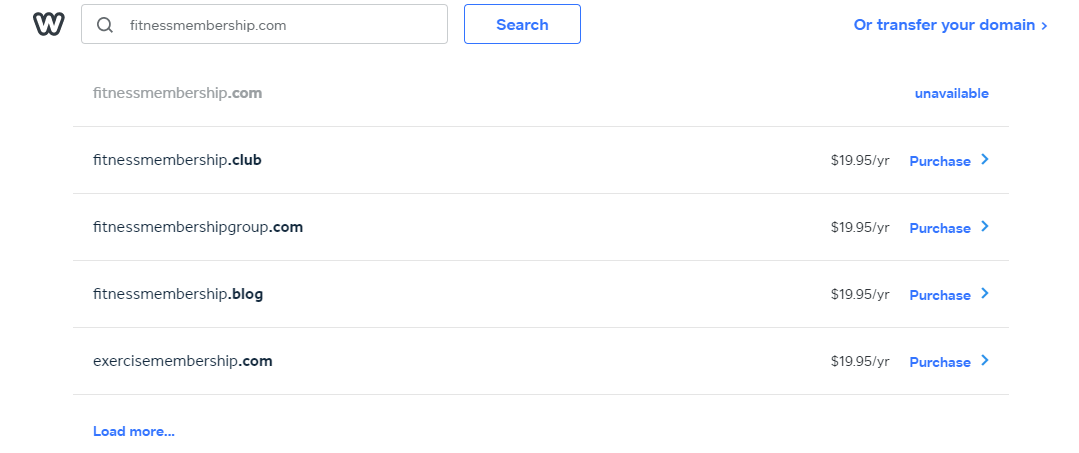Interested in creating a membership site, but not sure where to start? It’s okay. Many have been at this stage before you and have gone on to create successful membership businesses. That’s why we put together this comprehensive guide to help you get started. It will walk you through all the steps you need to take in order to start building a membership site.
Content Chapters
CHAPTER 1:
Why Do People Create Membership Sites?
In this chapter, we’ll look at the most common reasons for starting a membership site.
Creating and maintaining a membership site can take a lot of work. So why would anyone want to do it? Well, there are a variety of reasons.
We’ll tell you about the 4 most common reasons why people start a membership site. And we’ll help you figure out if starting a membership site is right for you.
So let’s get started!

Creating and maintaining a membership site is a lot of work. So why would someone want to do it? The truth is, there is no one reason. People choose to create membership sites for a variety of reasons: it may be fulfilling for them, it may make them money. Why might you want to create a membership site? Well here are some common reasons:
1. Membership Sites can Help Others
If you like helping others, creating a membership site might be a great opportunity for you. You can make a living by helping others learn and grow. Sound fulfilling? It truly can be. Your focus day in and day out can be how best to teach your members about your area of expertise.
Through your membership site, there is the opportunity to form meaningful connections and even friendships. It may put you in the position to hear stories from within your field that you otherwise may not have had access to.
Creating a membership site gives you the tools to connect with a wider audience. Instead of being limited by the time it takes to do one-on-one consultations, you can instead spread your ideas, goals, and inspiration with hundreds, if not thousands, of others.
2. Membership Sites can be Passive Income
One of the many benefits of creating a membership site is the potential for passive income. You create content, members sign up to access your content. Both sides win. You receive money for your work and members gain access to your expertise.
Creating a passive income stream may be one of the most appealing incentives for creating a membership site. Who doesn’t like the idea of having a passive income so they can focus on their dreams?
One of the beauties of running a membership site is that your income is never dependent on a singular customer. Instead, it’s a batch of customers, all of whom contribute to your monthly earnings. If one of your members cancels their membership, it’s not a big deal. Compared to other businesses where you may have to depend on only a few high paying customers, losing a single member from a membership site is nothing to sweat.
Membership sites also require relatively low work for the potential gain. Think of it this way: you work 25 hours to come up with a course. The members who sign up for your site will pay to go through your course. The amount of work stays the same whether you have two members or a thousand. You may put in more work to create another course, but the first batch of content is still relevant to new users.
Interested to hear more about this? We go into more detail about this in our Why You Should (and Should Not) Start a Membership Site blog.
While we can’t promise that creating a membership site will give you the ability to immediately quit your full-time job and travel the world, we can tell you that it’s an excellent first step toward creating your very own passive income stream.

3. Membership Sites can Grow Your Business
If you are a small business owner looking for the next best thing to grow your business, consider a membership site. Membership sites are not only a great way to establish your expertise, but also to give your income an extra boost.
Once your membership site is created and you have generated some content, you can focus on your other business endeavors. When you’re feeling inspired, you can generate more content or interact with your members by hosting a “members-only” event. The beautiful thing about membership sites is that once they are set up and you’ve made sure everything works properly, you can leave it for stretches of time without a problem.
Now, we’re not saying you can abandon it completely and still grow your membership site. There are strategies for growth and keeping engagement up. But if your membership is a part of a larger business venture, then you’ll be glad to know you can safely spend time away from your membership site without it imploding.
As with most things, you will get out of your membership site what you put into it. If you put a lot of work and time, you may see more growth and engagement. If your main focus is on something other than a membership site, it may grow at a slower pace. However, that doesn’t mean it’s not a great addition to a small business owner with a lot of knowledge to share.
4. Membership Sites can Give You Authority
Members will subscribe to your membership site because they want to know what you have to say. This puts you in the position to share your knowledge. It’s very likely that your members will regard you as an authority on your niche – after all, why would they subscribe if they didn’t believe you had information worth sharing?
If you have a membership community, you will likely be at the center of it. Active members will look to you for guidance, ideas, and leadership. They may ask you questions about their personal situations and seek your expert advice.
Having so many look up to you can be both thrilling and terrifying. You know the saying – with great power comes great responsibility. However, if you are looking to establish yourself as an authority on a subject, a membership site can be a terrific way to do it.
CHAPTER 2:
Who can Start a Membership Site?
In this chapter, we’ll talk briefly about who can start a membership site.
Some people assume they can’t start a membership site because they’re not an expert. Others think they don’t have the technical skills required for running a membership.
The truth is you don’t need to be an expert or technical ‘wiz’ to start a membership site. So if you’re feeling unsure if you’ve got what it takes, this chapter will help you out.

We have gone over common reasons why someone would want to start a membership site. Now we are going to cover how you can build a solid foundation for your membership site.
If you thought we were going to present you with a long list of things someone needs to run a membership site, think again. Because spoiler alert: anyone can do it.
As long as you have a desire to run a membership site, you can do it. Concerned about not having enough technical knowledge? Don’t be. Creating and maintaining a membership site doesn’t require a lot of tech know-how or in-depth coding experience. With all the website builders out there, you can whip up a functional site in no time. And membership tools like MemberSpace make it easy to integrate tricky membership features into your site.
Need a way to keep non-members out of members-only content? Done. Want to have multiple membership tiers? Done. Eager to run promotions with coupons? Done.
And all without a single drop of coding knowledge.
Indeed, anyone equipped with desire and a plan can create a successful membership site. So don’t think you have been ruled out just because you’re not very tech-savvy.
You may come across blogs or outdated content that tells you that you need to code custom features in order to run a membership site on a website builder, like Wix or Weebly. But that’s not true anymore. MemberSpace is compatible with both of those site builders and will supply you with the membership tools you need to create a successful membership site. You can check out all of our integrations here to see if your chosen website builder is compatible.
CHAPTER 3:
How to Choose Your Membership Site Topic
In this chapter, we’ll help you choose a great topic for your membership site.
Every membership site needs a topic. Your prospective members will want to know how you can help them. You need to give them a compelling reason to join your membership.
We’ll look at finding a niche, researching your audience (and their problems) and how you can narrow down your focus so you can grab the attention of your ideal audience.


Every membership site needs a topic. Prospective members will want to know what you can offer them. You will want to make a compelling case about why this membership is something they can’t live without.
The first step to making your membership site desirable is choosing an area of expertise. You want the membership site to revolve around an area you are familiar with. If you try to present yourself as an authority on an unfamiliar topic, members will notice right away (and likely cancel).
You need to choose an area where you are comfortable sharing your knowledge. If you are researching membership sites, you might already have an area in mind. However, if you don’t, give it some thought. What areas are you familiar with and passionate about? It can be anything from cooking to tech to education. What would you feel comfortable teaching or sharing with others?
Once you have picked out an area that you are confident in, it’s time to narrow down your niche.
1. Find a Niche
Niches are a great way to set your membership site apart. It’s hard to compete in crowded spaces or if you already have an established competitor. So we recommend really drilling down into your chosen area. Think about things you are familiar with in this area. Still not sure how your expertise fits in? Here are some ways to help you find the perfect niche:
2. Research Your Audience (and Their Problems)
Every membership site must have an audience, so think about who you want your members to be. For example, if you had a membership site for specialty cake designs, your audience would be baking enthusiasts.
When deciding on your niche, researching your target audience can give you an advantage. Every community has something it complains about. What better way to create a membership site than by solving your target audience’s problem?
MemberSpace did something similar. We saw a problem: membership sites were hard to build on Squarespace without complex backend code. So we created a solution. And then we made that solution available on other platforms such as Wix, Weebly, Webflow etc.
If there is a way to leverage your membership site as a solution to a problem, you have secured your audience. Creating a membership site around a cool idea may work, but there is also the chance that your audience won’t be interested. By creating a solution to something your audience is already interested in, it automatically secures interest in your offering.
Research is the key to your success in picking a niche. Find your audience’s community and dive in. Observe their needs, desires, and how they act. Based on this, you will be able to better tailor your membership site to them.
3. Aim Small
While it’s tempting to base your membership site on a really wide topic, we recommend aiming for a small niche. Why? Because the smaller the niche is, the easier it will be to target your audience. If your membership site is very specific, you have a greater chance of grabbing the attention of your desired audience.
So, how would this look in action? Let’s say you’re in the market for some specialized knowledge about do-it-yourself car repairs. Your car is a Nissan Maxima. Would you choose to join a membership site that offered random tutorials on a variety of cars or a membership site that specializes in Nissans? Since there is no guarantee that the membership site that does all cars would have a tutorial for your particular make/model, the specialized membership site would be the better choice.
It may seem counterintuitive to limit yourself, but you don’t want to appeal to everyone. You want your audience to feel like you were made specifically for them, not only vaguely apply.
One way to see if your niche is targeted enough is to write it out. You want to aim for three words or more. The longer the niche, the more pointed it is.
For example, “Do-it-yourself Wedding Cakes” is more specific than “Cakes.” Now you try it out. Write down your membership ideas and see if they are specific enough.
If you want more information about finding a business niche, check out this entire blog post about finding your business idea and customer niche.
CHAPTER 4:
Have You Chosen the Right Idea?
In this chapter, we’ll help you vet your idea to ensure that it’s the right one for you.
Hopefully, you’re excited about your idea. But will you still be excited in a couple of years? Will you have the energy to keep creating content? Will people pay for your membership?
We’ll walk you through a checklist of questions to help you evaluate your idea. And once you know you’ve chosen the right one, you’ll be able to move ahead with confidence.


Once you have a niche (or various niches) picked, it’s time to vet it. After all, you want to make sure this idea is the right one for you. There are a few things you want to look out for when evaluating your chosen niche.
1. Is it Sustainable?
Think about this topic in terms of longevity. Will this topic still be valid six months from now? A year? While it is possible to have a short-lived membership site, the majority of people want to build a passive income stream that will last them a good long while. If this is you, make sure you choose a topic that will stand the test of time. Of course, nothing is immune to change. However, if you can clearly see that your membership idea won’t be viable in a year or two, it may be best to look elsewhere.
2. You Know the Topic
Are you familiar with the topic matter? Will you be able to provide an opinion on it? If not, it may be best to look for another idea. Your members will sign up for your membership site for an expert’s opinion. If they feel like you are giving them false information, it won’t end well.
However, don’t write yourself off because you don’t consider yourself an “expert.” Expert status doesn’t necessarily mean you received a degree on the topic. It just means that you have enough knowledge to teach others. It doesn’t matter how you obtained this knowledge – whether you taught yourself, learned from online forums, or just have been floating around a community so long that you picked up some knowledge.
For example, you wouldn’t create a coding class if you hadn’t coded a day in your life or start a pet appreciation site if you didn’t like animals.
If you are genuinely looking to share information with people, it’s likely you already have enough knowledge to create a successful membership site. And you will definitely learn along the way, especially if you begin to interact with your membership community. So don’t doubt yourself.
3. It Won’t Get Boring
When you have a membership site, all of your content will be related to the niche you chose. If you choose something that only vaguely interests you, you are setting yourself up for a hard time down the line.
Membership sites are hard, but rewarding work. However, if you choose a niche you are not passionate about, how long will it be before you absolutely detest it? Working on things we are passionate about can give us more drive to complete it. If you lose interest in your niche, your membership site will suffer.
So, assess your niche. Does the idea of doing research and creating content about it excite you? Then you probably picked a good topic. If you feel ambivalent or maybe a little dread at all the research and content creating you are going to have to do, we recommend looking for another niche.
Even the most enthusiastic fans of a subject will have days where they don’t want to put in the effort. Think how much harder those days will be if you grow to hate your chosen subject matter.
4. You Did Your Research
We mentioned this earlier when we recommended ways for finding the ideal niche, but it bears repeating: do your research. Good research can bring to light a lot about a niche, like audience tastes, complaints, needs, and even inside jokes. All useful things that you can use to create your membership site.
A well-researched niche can help you evade rookie mistakes that can cost you members. It can also give you ideas for the type of content your membership site should have.
Research is your best tool when it comes to creating a membership site.
5. It Fulfills a Need
Like we mentioned in the Find a Niche section, a good topic will fulfill a need for your target audience. By fulfilling a need, you know some amongst your target audience will be interested.
It doesn’t necessarily have to be a life-altering change. It can easily be a small one. Let’s say, for the sake of example, you are creating an education membership site. During your research process, you may have encountered many questions from mothers who are sending their children to school for the first time.
What can I do to make sure my child is prepared for the classroom? What should I pack for their first day? How do I cope with being separated from them now?
From these questions, you can glean that there is a lot of uncertainty mothers have about sending their first child off to school. While there are problems with the sustainability of this type of topic (once mothers have adjusted to their children being at school, they may unsubscribe), it is this type of need you should be looking for. People in your chosen niche are asking questions and actively searching for answers.
By creating a membership site, you could be their answer.

6. Will People Pay for it?
Lastly, but definitely not least, you need to assess the marketability of your topic. Will people actually shell out the cash for it? To figure this out, there are a variety of factors you can look at.
First, is there a need for it? We keep mentioning this again and again, but without a need, interest for your offering may be low. The best way to guarantee that someone will pay for something is to solve a problem for them. If they feel like your offering is the solution, it’s natural that they would pay you for your service to them.
Next, what is your audience demographic? This may play a big role in whether or not you can get someone to part with their money. Combined with the need you’re offering to fulfill, this can greatly influence whether individuals will pay for your offering.
For example, if your demographic is poor college students, it may be harder to get them to pay for a quality of life offering that they can ultimately survive without. On the other hand, if you are creating a quality of life offering for small business owners, they may be more willing to pay for it.
However, if you have solved a problem for poor college students that will help them pass all their classes, there’s a higher likelihood that they will pay for it.
It comes down to balancing the pull between financial ability and need. While poor college students may not have a lot of money to spare, they will invest in things that will help them with their classes, especially if it means the difference between passing and failing. Less financially strained audiences, however, will be more likely to pay for less urgent problems, like quality of life software.
CHAPTER 5:
How to Build on Your Idea
In this chapter, we’ll look at what you need in order to turn your idea into a real product.
Creating a membership site might seem like a daunting task. But don’t worry, we’ve got you covered. It’s not nearly as complicated as it may seem.
We’ll help you understand the key ‘building blocks’ of your membership site, so you can understand how everything fits together.

Once you have decided on an idea, it’s time to build on it! This may be one of the most exciting parts of the planning process: you get to plan out all that your membership site will offer.
How do you want to create content? Will you do videos? Blogs? Walkthroughs? All of the above? This is the time to take your idea and start building it into reality.
So, first things first, establish what you will need to make your membership site real.
1. You’ll Need to Create a Website
To have a membership site, you need to create a website. Luckily, on the modern internet, that no longer means hours upon hours of coding. There are plenty of website builders out there that require absolutely no programming. Many of them even have themes or templates that do the site design for you. And many of these website builders have compatible membership tools like MemberSpace that can convert any website into a fully functional membership site.
2. You’ll Need to Choose a Membership Platform
Membership sites can be set up in many different ways. There are various membership models that have been used successfully.
Membership models determine how you run your membership site. Will you give members access to all your membership content as soon as they sign up? Or will you keep all the content away from your members and instead send it to them piece by piece? You could also mix it up and build a membership community where the members sign up so that they can interact with each other.
And that’s only naming a few options. However, now is the time to begin figuring out what type of model appeals to you. What platform you choose will affect how you build your site, what type of content you create, and more.
Don’t worry – We will go into detail about the different membership model types in a few sections. However, before that, we want to highlight one other key aspect of a membership site: the content.
3. You’ll Need Content
Content will likely be the main draw of your membership site. Unless you are creating a membership community, your members will likely sign up for the content you produce. Whether you are creating blogs on raising chickens or courses on auto detailing, your content will be the shining star of your offering. So what content should you produce?
The answer is that it depends. There are so many different types of content you could use.
We’ve put together a list of commonly used content types to help get you thinking about the possibilities. This is by no means an exhaustive list – just a few types of content to kick start your brainstorming:
Blogs
Courses
Email Series
Videos
How to/ Walkthrough Articles
Reviews
Podcasts
It’s also important to consider your strengths and weaknesses when deciding on a content type. Blogs, articles, and reviews are all easier to create because they only require the time it takes to write and post. Videos and podcasts, on the other hand, can appear deceptively simple, while they can actually turn out to be quite difficult to do well.
For these more complex content types, it’s crucial to assess the amount of time and effort you can invest. If you have the resources to learn about video or audio editing, definitely go for it. But if you are working on this after a full-time job or you are managing other business affairs, you may want to opt for a less time-consuming content type – at least in the beginning.

The membership model will affect all of your membership site, which is why it’s worth the extra time sorting through all the different types. Knowing you have settled on the best membership model for you (and your members!) means one less thing to worry about later.
1. All-Access Model
This membership model is simple. A member signs up and immediately gains access to all the content you have created thus far. The advantage of this model is that members won’t have to wait for content after they sign-up; they can immediately begin exploring. It also has the potential to open you up to a large member base. After all, anyone can subscribe and members may stick around for a long time to continue using your content.
However, the all-access model doesn’t come without drawbacks. Some members may sign up, download what they need, then immediately unsubscribe.
2. Drip Model
The drip model is the opposite of the all-access model. Instead of presenting all the resources upfront, the drip model feeds your members a little bit at a time. By doing this, there is the potential to keep members coming back each month for more content, thus doing away with the possibility of someone subscribing, collecting the content they need, and immediately unsubscribing.
However, it can sometimes be tricky creating the content funnel for members. Picture this: you have been running your membership site for nine months. Up till now, all new members have started at the beginning of a funnel. However, a recent update has just come out and all your beginning content is now outdated. You either have to go back and change all the old content so that it’s up to date, or figure out a way to siphon members into the most recently written content.
This can be a tricky place to be in, so when choosing the model, it’s important to anticipate and plan for these types of problems. It can save you a lot of time in the long run.
With drip models, creating content needs to be consumable in relatively short batches. Whether it’s a blog post or a podcast episode, your content should be easily digestible. Creating a whole email series for a single month’s release is not the way to go here. When content is released, your members will want it right away. They have already waited all month for the next batch; don’t toy with them by making them wait longer. Use content that they can access immediately because they will want to jump right in.
3. Community Model
The community model focuses on the social aspect of your members. Members subscribe to gain access to other members. Whether this is to bounce ideas around, gain peers or mentors, or just have a support group, a community model puts your members to work for you.
The upside to having a community membership model is that your members will interact and do a lot of the work for you. You can focus on moderating the community and producing interesting pieces of content to incite discussion.
However, if you don’t already have a few interested members, this model can be hard to start with. Without a few interested members to interact with, new members may quickly feel alienated and leave.
As far as content goes for a community model, it’s a good idea to use things that people can link to and share. Because a community model is all about member interaction, your content should serve as a way to inspire discussion. If the content isn’t easily shareable (like a personal email), it can make it hard for members to talk about it with others who either haven’t seen the content yet.
4. Timed Model
The timed model means that members are only subscribed for a certain period of time. They pay for access for a fixed period, then at the end of that period, they are no longer a member and lose access to the content.
A good example of this would be courses. If you have a membership site where you offer a course, members would only want to pay for access to the course. Once the course is completed, they have no need to stay subscribed. So you offer a fixed term or “timed” model membership. Of course, courses can be offered in any of the other membership models, but the timed model is one you often see paired with courses.
This variety does have the drawback of not inspiring long-term membership, though. Because the nature of the timed model is that members will eventually finish and leave, you can only depend on their payments for the life of the membership. If you are looking to inspire a long-term membership base, you would be better off using one of the other model types.
The timed model doesn’t have any restrictions as far as content goes. Just be sure that your members can make it through the content within the allotted time.
5. Hybrid Model
Now that you understand the basic models, you can get creative. A membership site doesn’t necessarily have to fall neatly into any of the categories we just talked about. Many successful membership sites implement parts of several models.
For example, an all-access membership may also have a community aspect, or a timed model may implement some dripped content. It’s okay to take the aspects you like and create a hybrid model just for your membership site.
Want more? This post goes into some other models you can consider.
CHAPTER 7:
How to Choose Pricing
In this chapter, we’ll show you how to set the right price for your membership.
Choosing how to price your membership model can be tricky (and a bit intimidating). You want to get the price that you deserve, but you also don’t want to set the price too high.
We’ll share some helpful pointers and guide you on how to find the best pricing.


Choosing how to price your membership model can be tricky (and a bit intimidating). You want to get the price that you deserve, but you also don’t want to set the price too high and scare members off. It can feel like an impossibly fine line to walk, but we have some helpful pointers to help guide you through to the best pricing.
1. Choose a Billing Time Frame
The first step is to determine the time frame. Do you want to be paid monthly or annually? Maybe even quarterly? Do you want to leave the choice up to the subscriber?
All of these questions will frame how you need to think about pricing. If you want to collect membership annually, naturally you need to collect a larger sum than you would for monthly. Monthly, on the other hand, would be whatever you ask for annually, divided by twelve.
Something to keep in mind when choosing the time frame: people are often more willing to sign up for something with a small, repeating price tag, than a large, upfront one. It’s easier to shell out a little – even if it’s more expensive in the long run – than committing for an entire year. To mitigate this problem, many sites offer a discount for members who pay for a full year upfront.
Still not sure what to choose? Check out Annual vs Monthly Billing: What’s the Best Pricing Model for more insight into the pros and cons of both methods.
2. Analyze Competitors
A good way to figure out what your membership fee should be is to look at your competitors, or at least similar services in the same field. This will give you an idea of what members are willing to pay for in your niche.
3. Make Sure the Price is Sustainable
At the end of the day, it’s likely that you want the membership site to become enough to support you. So make sure your pricing reflects that. It’s easy to fall into the trap of thinking that if you ask too much, no one will buy your membership. But, in reality, most people don’t buy because offerings don’t solve a painful enough problem for them.
If your offering truly solves a problem they have been experiencing, people will shell out whatever is necessary to get it.
If you are not sure what to ask for, we recommend starting out charging about $20 a month on average. You can always increase your price in the future for new members.
4. Be Realistic with Pricing Goals
You don’t have to get thousands of members to be financially successful with a membership site. If you price your membership at $20 a month per member (which translates to $240 per year), you only need two hundred members in order to make $48,000 in revenue.
That’s much more attainable than thousands of subscribers. Like fine wine, membership sites take time to mature. It’s likely you won’t start out with a hundred members. But if you can get one member, you can make it to ten. If you can get ten, you can make it to one hundred. And once you reach one hundred, you can definitely make it to two hundred.
CHAPTER 8:
Naming and Positioning Your Membership Site
In this chapter, we’ll help you choose the right name for your membership site.
The name you choose will set the tone for the rest of the membership. And it’s not just about finding a catchy title. You also have to position your membership in a unique way.
We’ll give you some tips on choosing a name, finding a website domain and establishing your brand and unique positioning.

 So, you have an idea, an audience, and a price. Great! But now it’s time to solve one of the trickiest parts of creating a membership site: you have to come up with a name for it.
So, you have an idea, an audience, and a price. Great! But now it’s time to solve one of the trickiest parts of creating a membership site: you have to come up with a name for it.
The name you choose will set the tone for the rest of the membership. This is your brand. The name will be emblazoned on anything related to your offering, so make sure it’s something that reflects well. You want it to be memorable and, ideally, fit the niche you’re headed into.
Naming your membership site, though, entails more than just brainstorming a catchy title. You also have to figure out how to position your website. And what does positioning your website mean? Well, it means that you have to figure out how to make your spot on the internet. And carving out a spot for yourself starts with your membership site’s name.
1. Consider the Website URL
When choosing a name, it’s important to factor in the website’s URL as well. Ideally, you want something short and memorable. You want your site to be easy to find and remember. If your web address is too long, it will be difficult for your members to remember what address to enter.
The website URL should also be some variation of your membership site’s name. Having a wholly different name will throw members off and make them question whether or not they are actually in the right place.
2. How to Get a Website URL
The technical term for website URLs is domains. They must be registered before they are used, but once they have been registered they are yours to use for the length of the registration.
Long story short: you need to pay for a domain in order to get a custom website URL for your site.
So how do you register a domain? You can go to any domain registrar. If you are using a site builder, like Squarespace or Weebly (owned by Square), they may also let you register domains through their interface.
When you have found a domain registrar, the process is a matter of plugging in the potential domain you want and seeing if it’s available.

Because there are so many websites running today, there are many domains that are not available.

Often when a domain comes up as unavailable, domain registrars will also supply similar domain names that are available. You can use this feature to look for potential substitutes.
3. Establishing Your Brand
Once an available domain name has been found, you need to also think about how the name will work for marketing. If you plan to market on any social media, you will want to check that the name is available on those platforms as well.
Namecheck.com is a good resource to use when trying to figure out what names are available on social media. It runs through popular social media sites and checks if the name you entered has been registered on any of the platforms. It also checks if the domain is available, too!
CHAPTER 9:
Now Dive In
Now it’s over to you!
You’ve now got all the information you need to start a membership site. Doing a little planning upfront will help you lay the foundation for a successful membership site.
And remember, we’re always here if you need help starting your membership site.

We have given you all the tools you need to start seriously planning your membership site. Now it’s time for you to take the reins and actually start the process. It can be intimidating, especially after all that information we just gave you, but in the end, the outcome can be so rewarding. We know we gave you a lot of information, but it all boils down to coming up with an idea, researching, and then building on it. We know plenty of people who started out from scratch just like this and are now running successful membership sites today – check them out!
In the next guide, you’ll learn exactly how to build your membership site. And we’ll show you how easy it can be with the right tools.













CHAPTER 6:
How to Choose a Membership Model
In this chapter, we’ll help you choose the right model for your membership. site.
A membership model helps you decide what you will provide to your members, how they will access your offering and how they’ll pay for it.
We’ll show you the 5 most common membership models. And we’ll explain the pros and cons of each one to help you choose the right model for your membership.